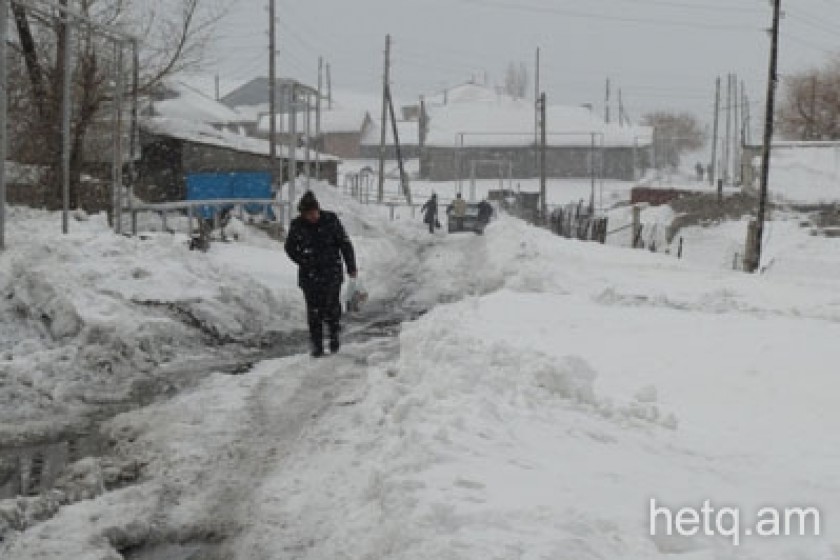
Krasar Village Mayor: "Winter lasts for 8 months of the year"
On June 13, 1985, residents of the village of Krasar were awakened by the screams of a snow-driven wind.
Villagers were planning to take their livestock up into the mountains for summer grazing. The sudden snow and cold took them by surprise, returning suddenly with an unexpected vengeance.
For the next three days, this village in the northern Armenian region of Ashotsk was blanketed in a freezing cold reminder of the depths of winter. Then, as suddenly as it arrived, the wintry blast subsided.
“There are only two seasons around here, winter and spring,” says 61 year-old Rafik Karapetyan. “Eight months out of the year is winter. We get by as best we can, always watching out for the arrival of spring.”
The 550 village residents mostly make a living by raising livestock. Only a portion of the tillable land is farmed. Many of the men go abroad for seasonal work.
You’ll see gas supply pipes along the streets but only 13 of the 100 village homes are actually hooked up to the system. This winter, only two of these used gas to heat their homes due to the prohibitive cost.
The rest get by in the traditional way, using dried animal dung.
Village Mayor Khachik Melikyan has inherited a 13 million AMD deficit from his predecessor Vahagn Hovhannisyan. Melikyan also has to finish a number of projects left uncompleted from the previous development program.
There are potable and irrigation water pipes to be installed, the cultural center needs renovating, a new school needs building and local roads need repairing. The village has to come up with 3.5 million of its own money for the work.
After the 1988 earthquake, the village, like many others in the area, were stripped of any administrative offices.
When the previous mayor lost the election in 2011, he took his tomik (trailer hut) with him. For 7 years, it has served as the village mayor’s house and office.
Mayor Melikyan has fixed up a corner of the dilapidated cultural center as his office.
The village faces a number of challenges and not enough funds to tackle them.
Even the electricity used by the new street lights, installed by Melikyan, is paid by local residents.
“For a poor village like ours, we have to go asking for favors, hat in hand, for what we can. In the winter, we even provide the fuel ourselves so that a tractor can come and clear the streets in the winter,” Mayor Melikyan says.
97 students attend the local high school which needs to be totally rebuilt from scratch. After the earthquake, Italian builders came in and constructed the school as a temporary structure. Without proper heating, it hasn’t survived the harsh climatic conditions of the area.
“We are a people living on the mountain top. Our voice takes quite a while to reach the government. Charitable organizations aren’t willing to sponsor the school and cultural center projects. We have to wait for assistance from Yerevan,” says Mayor Melikyan.
The village falls within the Arpa Lake National Park boundaries, in the extreme northwest of Armenia.
As compensation for some communal lands taken over by the park, the government has promised to allocate a cabin for the mayor’s office and 5 million AMD to renovate the drinking water system.
 Videos
Videos Photos
Photos




Write a comment